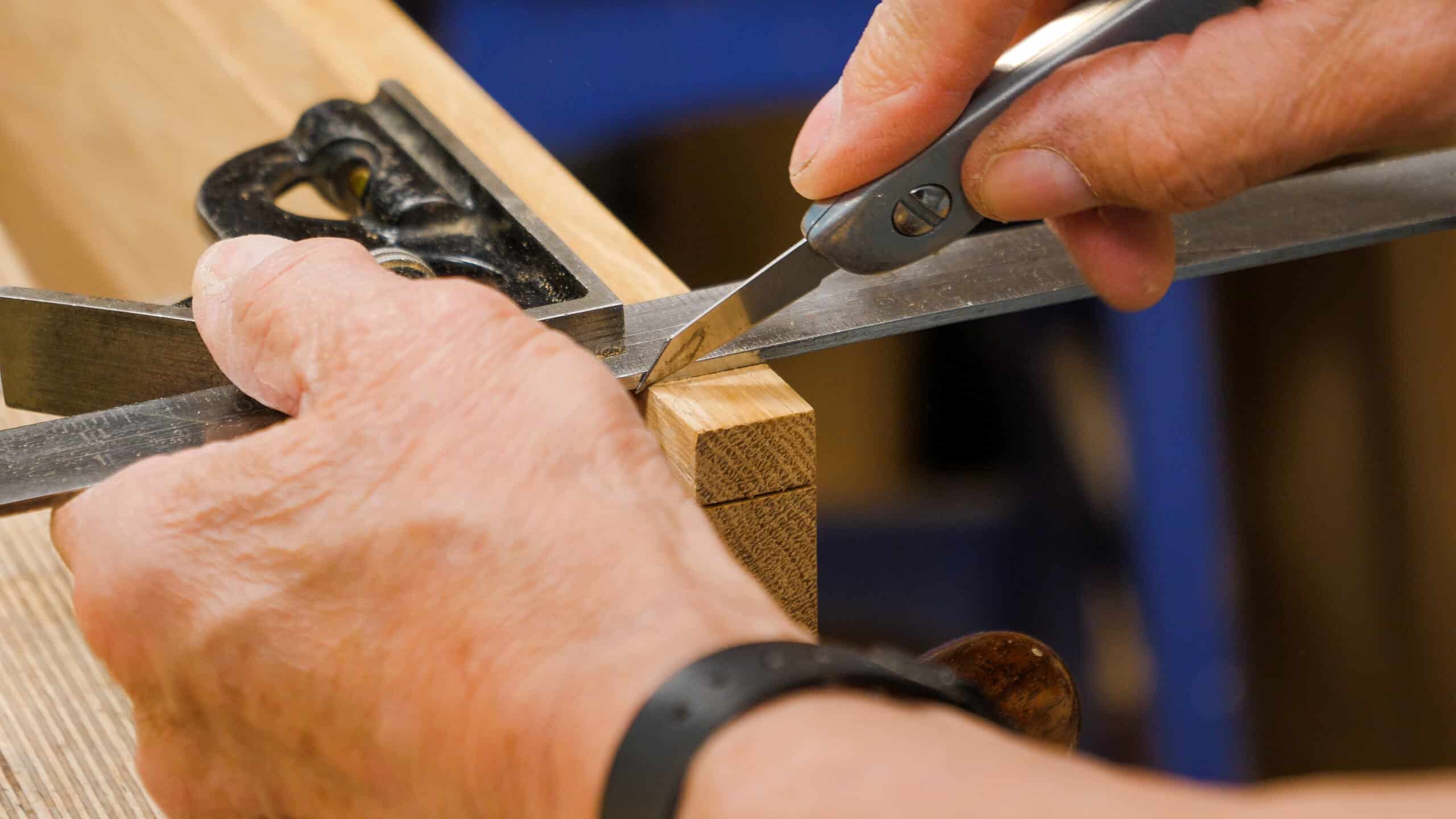Sellers Home Drinks Cabinet: Episode 2
Posted 29 June 2022
This is an episode in a paid series. Want to watch it? You just need to sign up as a paid member, and you can enjoy this video and many other videos we think you will love.
Cutting hand-cut dovetails on a project like this is an immersive process leaning towards therapy. Paul anticipates that you will love the whole process as much as he did filming it. There are some new-to-you techniques in this episode that he has never shown before that guarantee the exactness we all want in our finished dovetails, so watch out for the subtle nuances and enjoy the whole process.


Is there anything more satisfying in woodworking than watching beautifully made dovetails coming together!
Thank you Paul!
This is (one of?) the first time I have seen Paul use a coping saw to remove the waste between the dovetails. And, it was so helpful and refreshing to learn that when he uses this technique he also experiences end-grain tear-out.
Always thought my (poor) technique was the primary cause of this. And, that is a big discouragement. It was also helpful to see the little tricks Paul has employed (second knife line, for example) to assist the coping saw cut. Similarly, it took me a while to learn that the push stroke with the coping saw was better than a pull stroke. Even then, I second guess myself. Nice to have Paul’s confirmation on this.
Other helpful pointers:
– Stopping the saw cut above the knife wall
– Its ok to compensate for the all-too-typical bowing that happens with wider boards (flat is only ever temporary)
Also like Paul’s use of the step (rebate). Have done this off and on, though often with just a couple of strokes with a skew block plane. After watching this, I will now do it more religiously.
You have to love how Paul doesn’t really worry about marking the pins with the two boards at a perfect 90 degree right angle. Not sure I can work with the same confidence as Paul, but it is inspiring nonetheless.
It would be helpful if there were some way to bookmark the most helpful videos for faster future reference. For me, this is one of the best yet. Especially as it shows the coping saw alternative to remove the waste. I’ve watched other instructors employ this technique, in person and in video. As usual with Paul, this was the best explanation yet.
I’ve a better luck with not tearing up the endgrain after coping saw just by using a low angle chisel—similar to pfeil butt chisels.
Dear Paul and staff,
I m planning to make this cabinet as my autumn project after holidays. When do the plan will be published?
I want to study everything a bit in detail, because I want to make a heirloom (well, do my best at least).
Thanks.
I am also waiting for the plans
Thanks Paul for your guidence even at 79 years young I am still learning everytime I watch your episodes. You mentioned that there is a difference between European oak and American oak. How does it differ between Red oak and White oak?
There was a very similar project featured about 6 or 7 years ago, instead of being a ‘drinks cabinet’ it was a ‘tool cabinet’ and had a complete set on making drawers and an optional cornice, plus drawings.
It should still be available for full subscribers to watch. It isn’t identical in size etc., but the construction method is about the same.
Here’s a link to the intro:
https://woodworkingmasterclasses.com/videos/tool-cabinet-project-info/
Do i need a cut list?
– the project is scalable and one can adapt it to one’s own necessity;
– one can estimate the dimensions, measuring on the picture on the screen, knowing the average size of a bottle of wine;
– as YrHenSaer rightly point out, it has strong similarities with the tool cabinet; (what is different? At first look: size, one panel doors, single drawer, no back apparently, no crown, lamination of the door stiles and rails with two different wood, french cleat at the back, shelf placement)
That is not a reason not to watch this serie as in every serie we learn more tricks.
Now personally, I prefer to see all the episodes (at least once) before embarking on a project.
Yes we need a cut list, I resubscribed just for this series and it is disappointing not being able to start working on it now